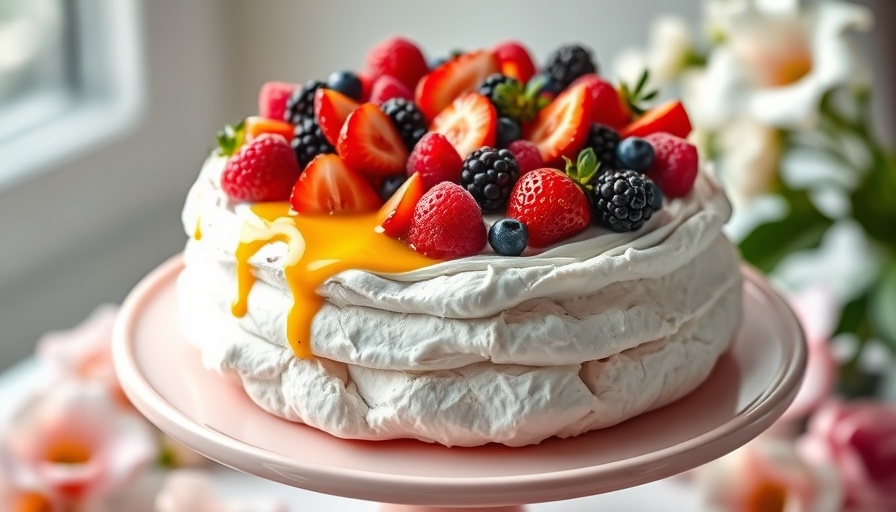
The Sweet Debate: Pavlova's Origin Story
In the realms of desserts, few confections come with as much historical baggage as the pavlova. This fluffy meringue dessert, adorned with fresh fruit and whipped cream, has become a symbol of national pride for both Australia and New Zealand. While the true origins remain shrouded in mystery, the conflicting claims have sparked an enduring rivalry between the two nations. The pavlova continues to not just tantalize taste buds but also ignite passionate debates.
A Desserts’ Birthplace: Diving into History
The pavlova's first recorded mention dates back to 1929, in the New Zealand Dairy Exporter Annual, where it appeared as a layered dessert reminiscent of a French dacquoise. This early reference suggests that the pavlova's roots might be more complex than either nation would like to admit. Interestingly, both the Australians and New Zealanders lay claim to this delightful dessert, arguing over its true birthplace.
Culinary Evolution: How Pavlova Became Iconic
Over the decades, the pavlova has evolved, adapting to the tastes and culinary trends of each generation. While the dessert is traditionally made with a crispy meringue shell, its fillings and toppings have morphed significantly. From lush tropical fruits like kiwi and passionfruit to rich chocolate drizzles and creamy mascarpone, variations reflect the evolving palate of not just Australians and New Zealanders but dessert lovers worldwide.
The Cultural Significance Beyond Taste
For both Australians and Kiwis, pavlova represents more than just a dessert; it is emblematic of their cultural identities. Celebrations offer a nostalgic reminder of family gatherings, holidays, and shared histories. The dessert has cemented its place at weddings and birthday parties, making it a staple of festive occasions. As such, the pavlova transcends the realm of cuisine to become part of a broader narrative about national pride and heritage.
Rivalry Served on a Platter: Competition or Collaboration?
The ongoing debate about the pavlova's origins has opened doors for fascinating culinary exchanges between Australia and New Zealand. Many chefs from both sides embrace this rivalry as a challenge rather than a conflict, collaborating and experimenting with their interpretations of the famed dessert. This culinary rivalry promotes creativity rather than hostility, creating fusion desserts that celebrate the best elements of both traditions.
Future Prospects: The Pavlova's Legacy
Looking ahead, the pavlova is likely to endure as both a beloved treat and a topic of spirited debate. The integration of international flavors and techniques will further enrich this dessert's legacy, opening avenues for innovation. With the growing trend of plant-based diets, vegan variations of pavlova are already emerging, which suggests that this dessert will continue to evolve in response to changing nutritional preferences and culinary practices.
Reinforcing Culinary Boundaries: Lessons on Food Heritage
The pavlova saga teaches us valuable lessons about the interconnectedness of culture and cuisine. It underscores the significance of culinary heritage and how it can spark healthy competition and collaboration. Instead of pitting nations against one another, food can serve as a bridge fostering understanding and respect. The story of the pavlova thus exemplifies how food can reflect broader social narratives and help share common identities.
Ultimately, regardless of its origin, the pavlova will continue to delight palates around the world. Whether enjoyed at a BBQ in Sydney or a summer gathering in Wellington, this dessert has carved its niche in the culinary landscape. The world may never fully agree on where pavlova began, but it remains a testament to the power of dessert in uniting people.
As you explore this dessert, consider hosting a pavlova-themed gathering. Invite friends to create their own variations, and enjoy the sweet taste of collaboration while celebrating a treat steeped in history.
 Add Row
Add Row  Add
Add 



 Add Row
Add Row  Add
Add 
Write A Comment